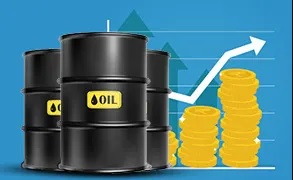Here’s a comprehensive look at how the 2025 Iran‑Israel–U.S. war is affecting crude oil demand and markets:
1. Immediate price shock from strategic concerns
-
Strait of Hormuz risk: With ~20% of the world’s seaborne oil passing through this chokepoint, threats—from Iran’s parliament and Supreme Council—to close or harass maritime traffic are sparking panic. Brent crude soared to ~$78–81 in mid‑June and could spike to $100–130/barrel in a worst‑case scenarioPrice premium: Analysts note a $10 risk premium baked into current pricing, with benchmarks quickly rallying 3–11% after strikes on Iranian nuclear sites
2. Supply-demand dynamics affected, but demand fundamentals hold
-
Global demand growth: The IEA forecasts global oil demand rising by ~720 kbpd in 2025 despite recent economic softness in the U.S. and China
Supply buffer: OPEC+ has ~5.7 mbpd of spare capacity, primarily in Saudi Arabia/UAE, along with pipeline routes bypassing Hormuz Traders’ mindset: Oil markets expect temporary disruptions—echoing past crises like the Gulf War—as reasons for short price spikes, not long-term shortages
3. Regional and global economic ripple effects
-
Emerging markets under pressure: Asian and Indo‑Pacific nations, heavily reliant on Gulf oil, face inflation, current-account strain, and higher fuel subsidies if prices remain elevated. For example, a $10–20/barrel price rise could increase India’s import bill by $30–40 billion/year Global inflation & growth drag: Rising energy costs bolster inflation, increase shipping prices, and may delay rate cuts. Goldman Sachs and JP Morgan warn that oil jumping to $120–130 could shave ~0.8 percentage points off GDP
4. Iran’s internal dynamics & export cuts
-
Domestic energy crisis: Iran has faced gasoline shortages since late 2024, worsening into June 2025—prompting panic buying and fuel queuesExports under strain: Though Iran produces ~4.8 mbpd and exports ~2.6 mbpd, new U.S. sanctions and internal unrest are already cutting its actual supply to markets

0 comments:
Post a Comment